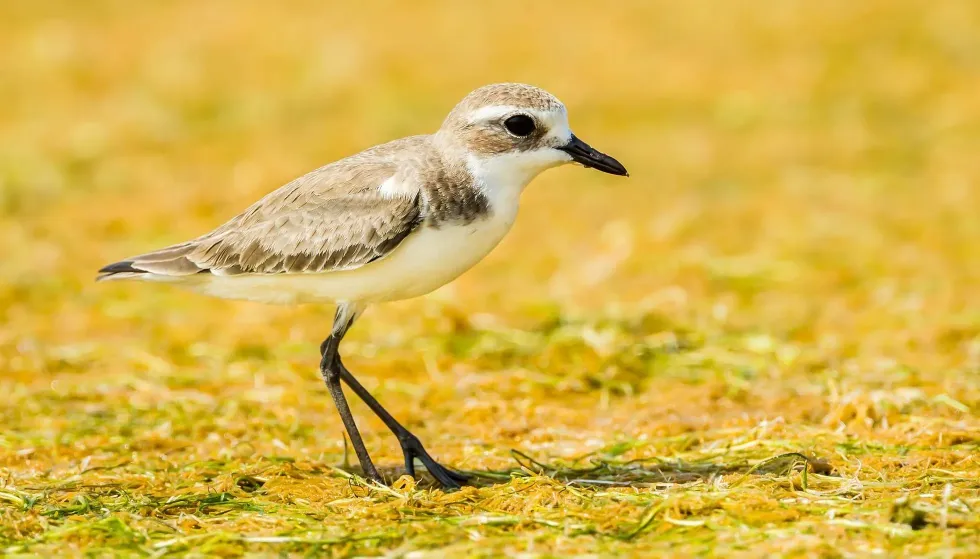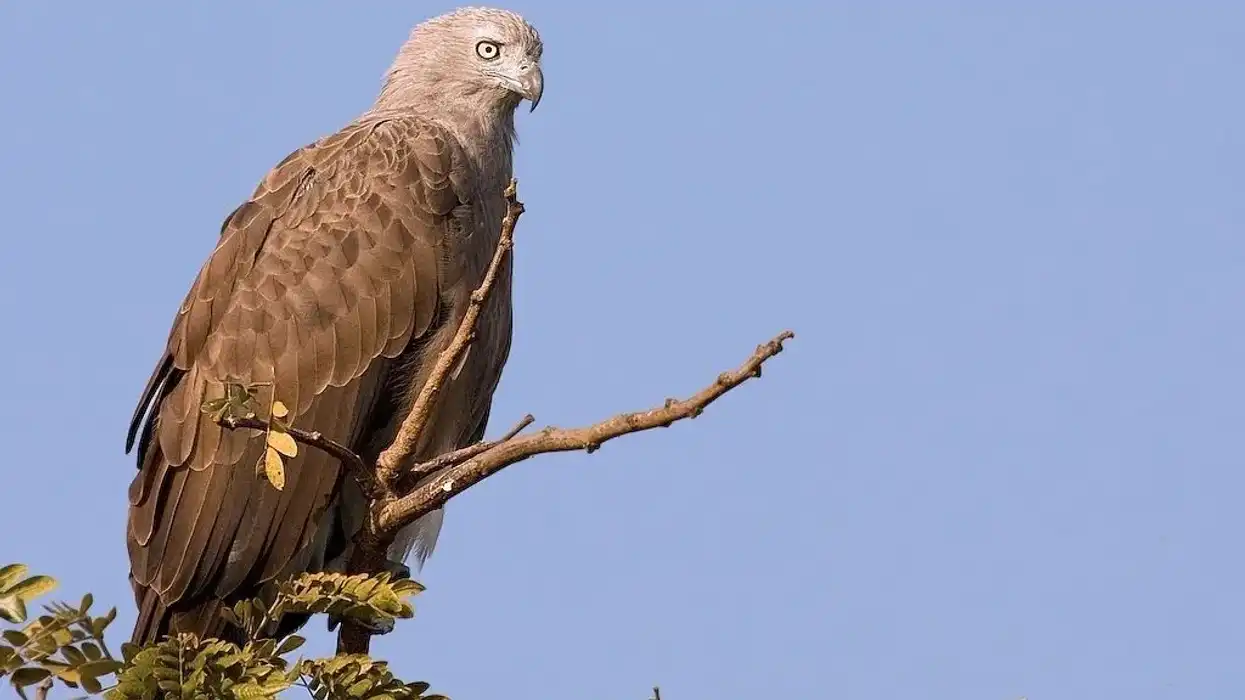There are unique birds all around the world map, and lesser sand plovers are definitely included in the list! Though rarely found in Europe, these birds make a frequent appearance all over the map in the United States, East Africa, and particularly Mongolia, where they are well known for their impressive breeding plumage.
All of them migrate every year to their wintering grounds as per information from Birdlife International.
While they are not endangered at the moment, scientists worry that their status of Least Concern may change soon due to the loss of habitat.
Therefore, in order to protect their status, it has been recommended that people practice the conservation of these species in all forms. This can include staying away from their habitats, donating to organizations that work to help them, and more!
Read about this species, and make sure you find out more about other birds like the swallow-tailed kite and the palm warbler too!
Lesser Sand Plover Interesting Facts
What type of animal is a lesser sand plover?
The lesser sand plover, Charadrius mongolus, is a type of bird.
What class of animal does a lesser sand plover belong to?
The lesser sand plover belongs to the class Aves.
How many lesser sand plovers are there in the world?
The lesser sand plover (Charadrius mongolus) is thought to have a world population of around 310,000 to 390,000 individuals. The species' overall population pattern is unknown.
Where does a lesser sand plover live?
Mongolian sand plover birds live in wetlands and are found all around the world.
What is a lesser sand plover's habitat?
These lesser sand plovers are not heavily reliant on trees. They can be found at altitudes of up to 18,000 ft (5,500 m).
Cultivated lands are part of these species' developed ecosystem and habitat. Tundra grasslands, forests, beaches, high-altitude grasslands, tidepools, marshes, swamps, intertidal mudflats, estuaries, and coastal dunes are among the natural environments and habitats of these lesser sand plovers.
Who do lesser sand plovers live with?
They are known to live alone, or in small groups, and are monogamous.
How long does a lesser sand plover live?
The oldest Mongolian plover bird (with the taxonomic split) ever discovered was at least 20.5 years old. There is insufficient data available for this species in the United States.
How do they reproduce?
In most of their breeding grounds, the breeding season for sand plovers is in May and June. These birds belong to wader groups, are monogamous, and possess a strong sense of territoriality. Sand plovers breeding grounds include mountain steppe and elevated tundra, forest plains above tree-line, shingle beaches, and salt marsh dry edges.
The nest of the lesser plover is a shallow, unlined scrape on the field. There are three eggs in the clutch. Both parents take turns incubating the eggs.
After 22-24 days of incubation, the lesser sand plover chick hatch. The chicks are precocial, and after 30–35 days, they fledge. In the spring, Asian plover can be observed in limited numbers in areas of western Alaska.
What is their conservation status?
The sand plover Charadrius mongolus species have been classified and assessed by the IUCN Red List as of Least Concern.
Lesser Sand Plover Fun Facts
What do lesser sand plovers look like?

The hindneck and sides of their neck are chestnuts. From the base of the bill to the ear coverts, a broad black eye mask passes over the eyes. A dark brown line runs across the forehead.
The underbelly is white. The female lesser sand plover in California have a rufous or dark grey-brown mask.
On the forehead, there is no dark line. The black and chestnut markings on non-breeding plumage turn gray-brown. These birds have bill-black, white ring around the eyes with dark brown irises and legs are a dark grey color.
Adult banded dotterel is similar in size to Mongolian plover. Dotterel birds have a thin black band on the lower neck and a chestnut stripe on the higher breast, divided by a white band.
The New Zealand dotterel is bigger, with orange-brown imbued underparts (at the time of breeding) and brown upperparts.
The breeding plumage of the greater plovers (Charadrius leschenaultii) is bigger but similar in color to that of the Asian sand plover ( Mongolian sand plover). Other plovers from the family Charadriidae include American golden plover, mountain plover, semipalmated plover, western snowy plover, black-bellied plover, and the piping plover.
How cute are they?
The lesser sand plover Charadrius is a small to medium-sized migrant bird. Their bright white wing bar, grey backs (breeding male), white underparts, log legs, paler brown plumage, and hard trill vocalization make them cute birds.
How do they communicate?
A quick, hard 'drrrit' or a hard trilling sound is the flight call of these plover Charadrius mongolus species of wader groups.
How big is a lesser sand plover?
The average length of lesser plovers ( C. m. mongolus) is 6.69-8.66 in (16.99-21.84 cm). Lesser sand plover and snowy plover both belong to the same family (Charadriidae). Snowy plover measures 5-7 in (13-18 cm) in length. Kentish plover birds measure 5.90-6.69 in ( 14.98-16.99 cm) in length. Lesser sand plovers are larger than Kentish and snowy plover birds.
How fast can a lesser sand plover fly?
Sufficient information is not available about the flying speed of this migrant bird.
How much does a lesser sand plover weigh?
Lesser sand plover's range of weight is between 1.41-3.88 oz (40-110 gm).
What are the male and female names of the species?
Sand plovers birds, both male and female, have no distinct names.
What would you call a baby lesser sand plover?
The baby lesser sand plover has no particular name, but young birds are usually called chicks.
What do they eat?
Invertebrates make up the majority of the diet of Mongolian plovers or lesser sand plover Charadrius bird species. Mollusks, crustaceans (crabs), polychaete worms, insects like insect larvae, beetles, and amphipods are their main sources of food.
The prey is located by sight for these sand plovers species. They scavenge for prey on wet surfaces or explore the muddy ground (mudflats) for food. They often feed in the traditional run-stop-peck manner.
Are they poisonous?
These Mongolian plovers are not poisonous.
Would they make a good pet?
As a wild animal, it would not be fair to keep one as a pet, though they are interesting and beautiful birds.
Did you know...
The lesser plover bird or Mongolian plover species has five subspecies: C. m. pamirensis, C. m. atrifrons, C. m. schaeferi , C. m. stegmanni, C. m. mongolus.
Subspecies C. m. atrifrons is found in the southerly Tibetan Plateau and Himalayas and wintertimes in Indonesia and India. The orange breast band on the atrifrons subspecies is more extensive and well-defined. The forehead is white.
Subspecies C. m. schaeferi is found from East Tibet to South Mongolia. This species has a narrow and pale orange breast band and there is no black at breast band uppermost edge.
Subspecies C. m. stegmanni is found in Kamchatka to Chukotsk Peninsula. It has a larger white forehead and the breast band is dark rufous
These migratory birds (Charadriiformes) spend the winter on shorelines in South Asia and East Africa. Although it is a short vagrant in Western Europe. While the three individuals reported in Great Britain until 2003, one of them was a Mongolian plover.
These lesser plover species are migratory birds. These plovers move south for wintering. They return back to the breeding areas in April and May.
How did the lesser sand plover get its name?
The genus name 'Charadrius' comes from an Early Latin word that refers to a yellow shade bird described in the Vulgate in the 4th century. It comes from the Ancient Greek word 'kharadrios', which refers to a bird that lives in ravines and different types of river valleys (kharadra, 'ravine').
Charadrius mongolus, the lesser sand plover, is a little wader in the plover family. Lesser sand-plover is the most standard spelling, however, lesser sand plover is the authorized British Ornithologists' Union spelling.
What is the difference between a lesser sand plover and a greater sand plover?
A greater vs lesser sand plover can be distinguished from its size, with the lesser bird being marginally smaller. When compared to the greater sand plover, the lesser has a shorter bill length.
In a plover Charadrius mongolus, the legs are usually darker, range from black towards grey, while in a greater plover, the legs are much paler, range from grey to yellowish. The behavior of lesser vs greater sand plover is a less known bird because of lack of research.
Here at Kidadl, we have carefully created lots of interesting family-friendly animal facts for everyone to discover! Learn more about some other birds from our marabou stork facts and American bittern facts pages.
You can even occupy yourself at home by coloring in one of our free printable Lesser sand plover coloring pages.










